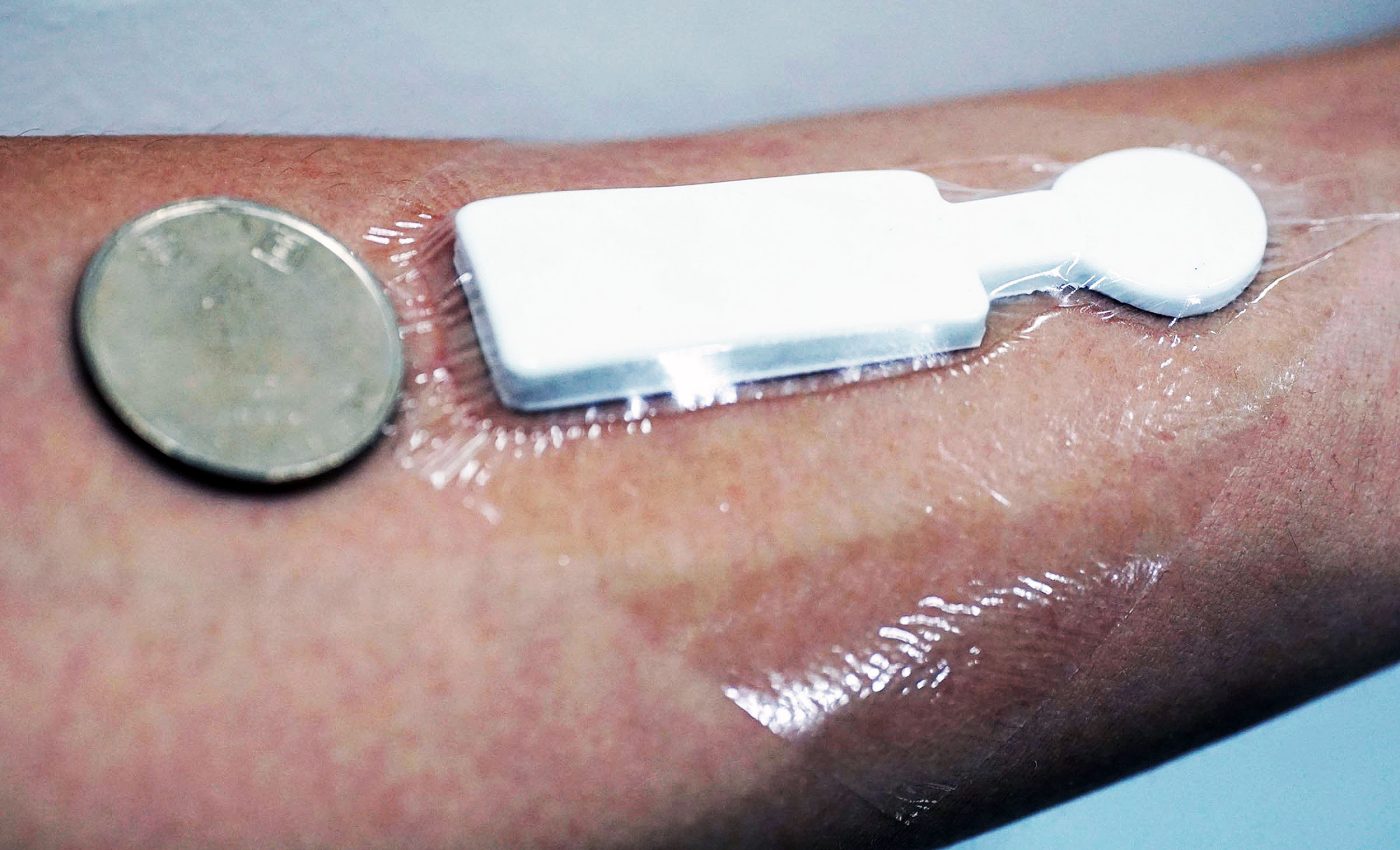
New sensor reveals your true emotions, even when you're faking it
Our inner emotions don’t always match what we show on the outside. People often say they’re fine while feeling overwhelmed inside – a common habit that can lead to mental health struggles like anxiety or panic attacks.
Spotting these hidden emotions isn’t always easy, especially for health care providers who are trying to help.
In a breakthrough study, researchers have created a stretchable, rechargeable sticker that senses the body’s emotional signals, including changes in heart rate and skin temperature.
Developed by scientists at Penn State, the device offers a way to see beyond facial expressions and get a more accurate read on how someone is really feeling.
Tracking emotions beneath the surface
“This is a new and improved way to understand our emotions by looking at multiple body signals at once,” said Huanyu “Larry” Cheng, a professor of engineering science and mechanics at Penn State.
“Relying only on facial expressions to understand emotions can be misleading. People often don’t visibly show how they truly feel, so that’s why we’re combining facial expression analysis with other important physiological signals, which will ultimately lead to better mental health monitoring and support.”
The sticker tracks several indicators that are tied to emotional states. These include skin temperature, heart rate, humidity, and blood oxygen levels.
The emotion sensors are carefully designed to work independently, which means each variable reading stays accurate and does not interfere with the measurement of the others.
Sensor identifies emotional reactions
The patch also uses facial expression data and compares it with body signals to tell the difference between a real emotional reaction and a faked one.
The data is then sent wirelessly to mobile devices or the Cloud, where it could help doctors assess patients remotely. Importantly, the device doesn’t collect personal data – just the signals – to protect user privacy.
“This technology has the potential to help people who are struggling with their mental health, but maybe aren’t being fully honest with others or even themselves about how much they are struggling,” explained Yangbo Yuan, who is a co-author on the paper, and a doctoral student studying engineering science and mechanics at Penn State.
The device understands context
Some people may seem calm when they’re actually overwhelmed. Others might appear visibly distressed more easily.
According to Cheng, these differences – often shaped by culture or personality – could be better understood using this tool.
“By keeping track of these signals, it could be possible to detect problems like anxiety or depression earlier in its progression,” said Cheng.
The patch is about the size of a Band-Aid and can bend and stretch without breaking. The team used thin layers of flexible metals like platinum and gold, cut into wavy patterns to maintain flexibility.
Materials that react to temperature changes were added, along with carbon nanotube tubes to detect humidity.
Each sensor was placed with care to ensure one didn’t disrupt another. For example, the temperature and humidity sensors were protected by a stiff backing to prevent stretching, while waterproof layers shielded them from outside moisture.
“We’ve engineered this device to measure these different signals independently, without them interfering with each other, providing a much clearer and more accurate picture of what’s happening beneath the surface,” said study co-author Libo Gao, an associate professor at Xiamen University.
Fake feelings versus real emotions
The team also trained artificial intelligence to discriminate between real feelings and fake ones. They asked eight participants to make six common facial expressions – joy, surprise, fear, sadness, anger, and disgust – one hundred times each.
The device recorded their movements, and the data was used to teach the AI to spot emotional cues. Then, three new participants joined to test the system. The AI identified the posed emotions with over 96% accuracy.
To test for genuine emotion, the same participants watched videos meant to stir feelings. The device picked up on the emotional shifts with nearly 89% accuracy.
The sensors confirmed that things like rising heart rate and skin temperature matched expected reactions, such as during anger or surprise.
A sensor to monitor human emotions
The emotion sensor could become a valuable tool in virtual healthcare. Since it sends data wirelessly, doctors could one day use it to check in on patients from afar.
“This sensor can serve a vital function in bridging gaps in access to care,” Cheng said. “Given the rising stress levels in modern society, the ability to monitor emotions can provide early indicators of debilitating conditions and allow for proactive support.”
There may be other uses, too. The team believes the same technology could help understand emotional responses in non-verbal patients, identify early signs of dementia, and even track athletic performance or wound healing.
Ultimately, the emotion sensors may be able to assist in detecting overdoses or following the course of neurodegenerative diseases.
“While still in the research and development phase, this device is a significant step forward in our ability to monitor and understand human emotions, potentially paving the way for more proactive and personalized approaches to mental health care,” concluded Cheng.
The full study was published in the journal Nano Letters.
—–
Like what you read? Subscribe to our newsletter for engaging articles, exclusive content, and the latest updates.
Check us out on EarthSnap, a free app brought to you by Eric Ralls and Earth.com.
—–













